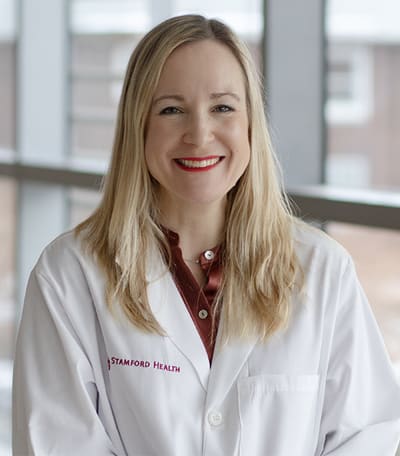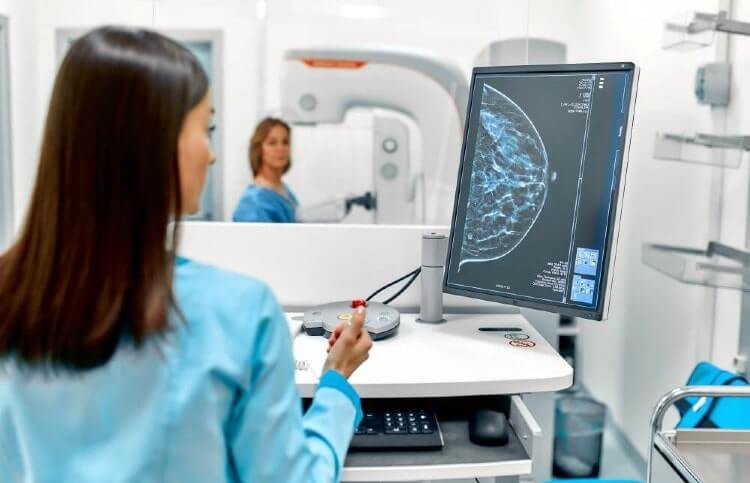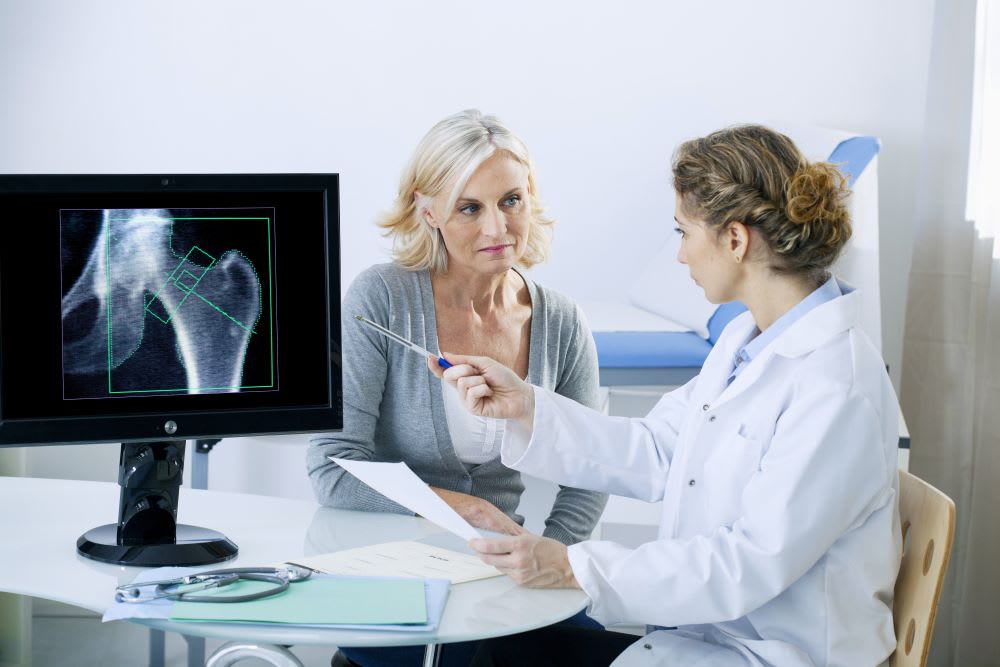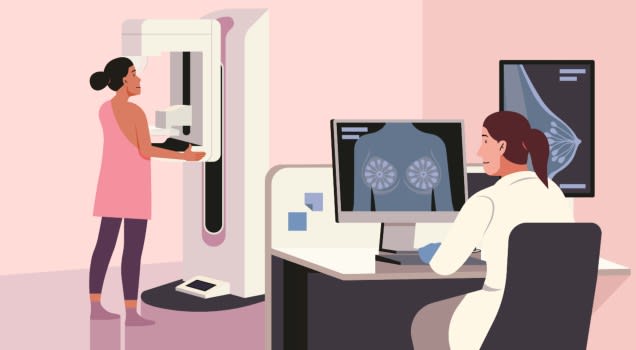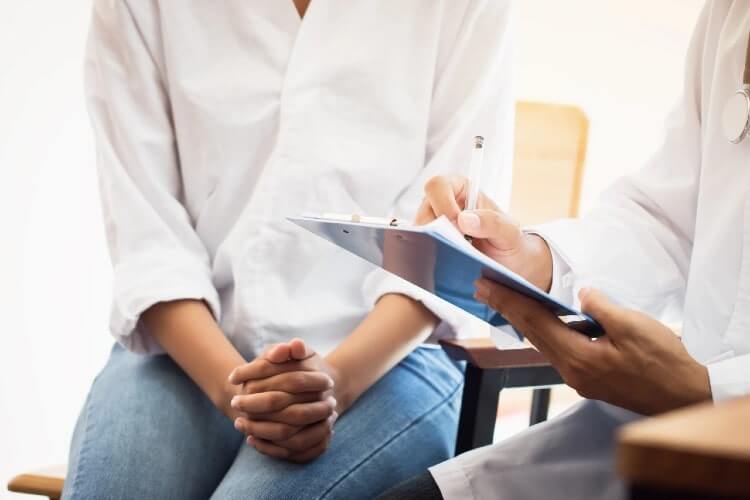Actor Olivia Munn made headlines last week when she underwent a double mastectomy following a breast cancer diagnosis. Munn shared that her breast cancer was detected after her OB-GYN conducted a breast cancer risk assessment. The actor had a clean mammogram a few months prior, but after the assessment, her OB-GYN referred her to receive additional imaging, which detected an aggressive cancer.
Breast cancer risk calculators, including the Gail model that Munn used, and the Tyrer-Cuzick Risk Assessment Calculator or IBIS model, differ in the number of important risk factors they consider and, therefore, in their accuracy. For example, the Gail model doesn’t include cancer diagnoses among second-degree relatives, relatives who have undergone genetic testing, or male relatives who have had breast cancer; nor does it accurately estimate the risk for women with a history of abnormal breast biopsies. Moreover, it may understate the risk in Black women who have had biopsies and Hispanic women born outside the United States, while completely underestimating breast cancer risks among American Indian or Alaska Native women.
The IBIS model, on the other hand, considers breast density, body mass index (BMI), family history of ovarian cancer, and second-degree female relatives and male relatives who have had cancer. Although it underestimates breast cancer in the LatinX population, it is the more accurate tool overall, and the best model we have. Most breast cancer centers of excellence use it, and it is endorsed by our international high-risk society.
Knowing your female relatives’ histories of certain cancer gynecological cancers is also important. It is common to see patients confuse ovarian cancer with cervical cancer and vice versa. Cervical cancer has no genetic risk factors, and is caused by a virus, while ovarian cancer carries a strong risk of a BRCA mutation.
BMI is also important. Fat cells produce estrogen, which is a risk factor for breast cancer, especially after menopause. Leaving out your BMI means you are leaving out an essential risk factor.
Family history, genetic mutations, or prior history of an abnormal breast biopsy are all markers for future breast cancer risk, which indicate the need for careful screening. But if women do not put this information into the risk assessment tool, then they won’t get a reliable report of the breast cancer risk they face.
Genetic testing has very strict criteria and its necessity for a given patient is not included in a risk assessment. Genetic testing is predicated on the number of relatives on one side of the family who had cancer, or more than one cancer in the same relative, or certain types of cancers. For example, a grandmother with breast cancer and ovarian cancer is a red flag for the BRCA gene, and the need for genetic testing.
A yearly mammogram can only detect — not prevent – breast cancer. Stamford Health’s High-Risk Breast Cancer Screening Program, which assesses your lifetime risk of breast cancer, can help you increase your chances of detecting cancers earlier.
Using two different quantitative instruments, we calculate whether your breast cancer risk is average or elevated, every time you have a mammogram. If your risk exceeds or is equal to 20% (the risk in the general population is approximately 12%), then our high-risk coordinator contacts you and, in partnership with other experts from our breast cancer team, develops a personalized care plan, which may feature:
Once we determine your breast cancer risk and risk factors, we help you reduce them by modifying your lifestyle, which includes eating a low-fat, Mediterranean, or plant-based diet to achieve and maintain a healthy body weight; doing at least 150-minutes of weekly exercise; minimizing alcohol intake; and quitting smoking. You can boost your chance of detecting breast cancer early by:
Any cancer at a young age is abnormal and something to share with your doctor, as is anything else about your breast cancer risk that concerns you. That’s what we’re here for.
What is a breast cancer risk assessment?
Although knowing your risk for breast cancer can help detect cancer at its earliest and most curable stage, using a risk calculator by yourself is not as reliable as using it with a clinician’s guidance.Breast cancer risk calculators, including the Gail model that Munn used, and the Tyrer-Cuzick Risk Assessment Calculator or IBIS model, differ in the number of important risk factors they consider and, therefore, in their accuracy. For example, the Gail model doesn’t include cancer diagnoses among second-degree relatives, relatives who have undergone genetic testing, or male relatives who have had breast cancer; nor does it accurately estimate the risk for women with a history of abnormal breast biopsies. Moreover, it may understate the risk in Black women who have had biopsies and Hispanic women born outside the United States, while completely underestimating breast cancer risks among American Indian or Alaska Native women.
The IBIS model, on the other hand, considers breast density, body mass index (BMI), family history of ovarian cancer, and second-degree female relatives and male relatives who have had cancer. Although it underestimates breast cancer in the LatinX population, it is the more accurate tool overall, and the best model we have. Most breast cancer centers of excellence use it, and it is endorsed by our international high-risk society.
How accurate are these risk assessments?
These tools are only as accurate as the information we give them, which is why I urge all women to use them with the help of a clinician who can explain the importance of answering questions precisely, like those about family history. The association between family history of cancer and breast cancer risk is significant. Patients commonly think their paternal family history is not an important breast cancer risk, so they omit this data. Breast cancer genes are passed from both maternal and paternal sides equally.Knowing your female relatives’ histories of certain cancer gynecological cancers is also important. It is common to see patients confuse ovarian cancer with cervical cancer and vice versa. Cervical cancer has no genetic risk factors, and is caused by a virus, while ovarian cancer carries a strong risk of a BRCA mutation.
BMI is also important. Fat cells produce estrogen, which is a risk factor for breast cancer, especially after menopause. Leaving out your BMI means you are leaving out an essential risk factor.
Family history, genetic mutations, or prior history of an abnormal breast biopsy are all markers for future breast cancer risk, which indicate the need for careful screening. But if women do not put this information into the risk assessment tool, then they won’t get a reliable report of the breast cancer risk they face.
Should I have a breast cancer risk assessment done?
Yes. The American College of Radiology says most women should get a breast cancer risk assessment at age 25, which is the youngest age at which we start imaging. Age at diagnosis and family history are very important in ascertaining whether a patient needs genetic testing or how rigorously to screen, as well as when to start screening. If a patient’s mother had breast cancer at age 40, for instance, then we start screening the patient at age 30 with both MRI and mammography.Genetic testing has very strict criteria and its necessity for a given patient is not included in a risk assessment. Genetic testing is predicated on the number of relatives on one side of the family who had cancer, or more than one cancer in the same relative, or certain types of cancers. For example, a grandmother with breast cancer and ovarian cancer is a red flag for the BRCA gene, and the need for genetic testing.
Breast screening recommendations:
The average woman should start mammography at age 40. Even if you’re of average risk, don’t skip your mammogram. I suggest mammograms for women well into their 70s and 80s if they are completely functional and living independently. Finding breast cancer early allows us to start treatment when it has the best chance of success and minimizes treatment.A yearly mammogram can only detect — not prevent – breast cancer. Stamford Health’s High-Risk Breast Cancer Screening Program, which assesses your lifetime risk of breast cancer, can help you increase your chances of detecting cancers earlier.
Using two different quantitative instruments, we calculate whether your breast cancer risk is average or elevated, every time you have a mammogram. If your risk exceeds or is equal to 20% (the risk in the general population is approximately 12%), then our high-risk coordinator contacts you and, in partnership with other experts from our breast cancer team, develops a personalized care plan, which may feature:
- Additional imaging, such as a breast MRI (a highly sensitive test that can detect abnormalities early) or ultrasound.
- Education about risk-reducing lifestyle changes.
- Referral to specialists, such as a medical oncologist, who will discuss medication that may lower your breast cancer risk, or a genetic counselor, who can help you understand health conditions that run in your family).
- Scheduling frequent follow-up exams to keep an eye on your breast health.
Once we determine your breast cancer risk and risk factors, we help you reduce them by modifying your lifestyle, which includes eating a low-fat, Mediterranean, or plant-based diet to achieve and maintain a healthy body weight; doing at least 150-minutes of weekly exercise; minimizing alcohol intake; and quitting smoking. You can boost your chance of detecting breast cancer early by:
- Having regular mammograms.
- Coming to screening appointments with as much information as possible about your extended family’s cancer history, including cousins, aunts, and uncles who had cancer, especially of the breast.
- Keeping track of all your medical information so you can update new providers.
Any cancer at a young age is abnormal and something to share with your doctor, as is anything else about your breast cancer risk that concerns you. That’s what we’re here for.
Featured Expert/ Author



